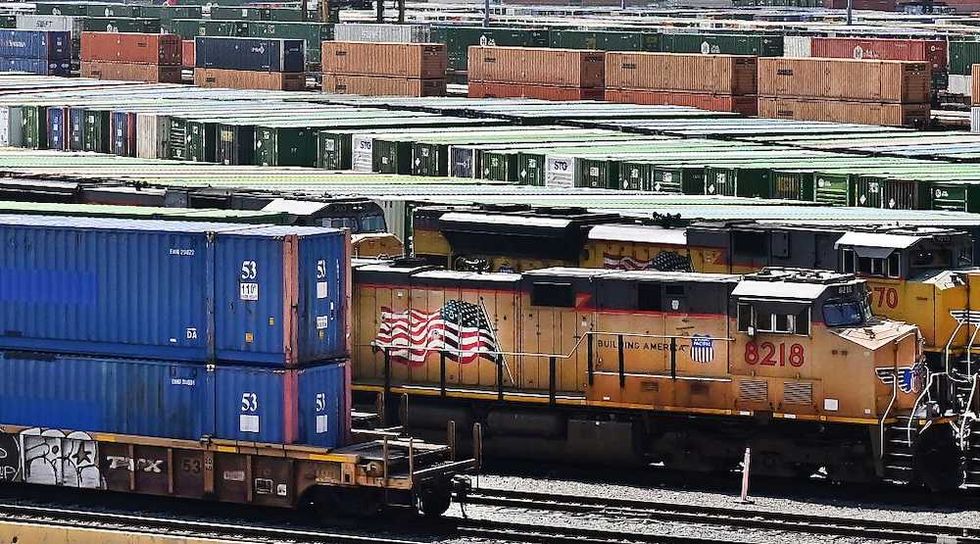The railroad that could unite — and revive — America | Blaze Media
When America completed its first nationwide railway in 1869, it did more than link two coasts. It united a nation. Railroads carried goods, materials, and people across vast distances at unprecedented speed, sparking an economic boom that forged a stronger, more unified country.
A century and a half later, the United States faces a new test. Globalization, supply-chain fragility, and inflation have exposed how dependent America has become on foreign systems and vulnerable networks. To meet these challenges, the nation must again invest in its own strength — beginning with its railroads.
Trucking currently dominates US freight, providing flexibility but at a steep cost in lives and highway damage. Railroads, by contrast, build and maintain their own infrastructure.
The proposed merger of Union Pacific and Norfolk Southern, announced in July, offers that opportunity. The combined company would create America’s first coast-to-coast rail network under a single U.S. carrier, spanning more than 50,000 route miles and linking 100 ports across 43 states.
A direct line to lower costsA unified system means fewer handoffs between fragmented regional networks, faster delivery, and lower costs. Streamlined routes would eliminate the bureaucratic friction that slows commerce and adds uncertainty to shipping. For farmers, manufacturers, and consumers, that translates into stronger supply chains, lower prices, and renewed confidence in the American economy.
Trucking currently dominates U.S. freight, providing flexibility but at a steep cost. Federal data show that heavy trucks were involved in more than 150,000 crashes and 4,500 deaths in 2024. A single tractor-trailer inflicts the same highway damage as 9,600 cars — a massive public expense that taxpayers absorb.
Railroads, by contrast, build and maintain their own infrastructure. They reinvest billions each year without federal subsidies, move more goods with less fuel, and emit fewer pollutants. When uninterrupted by carrier transfers, rail shipping can be up to 60% more cost-efficient per ton than trucking.
A transcontinental system would amplify those advantages. Freight could move directly from origin to destination without costly delays. Lower transportation costs in agriculture, manufacturing, housing, and retail would ripple through the economy, easing inflation and boosting competitiveness for U.S. producers.
Strengthening American industryThe merger also complements the Trump administration’s effort to reshore manufacturing and rebuild domestic supply chains. With access to 100 ports and 10 international interchanges, a unified Union Pacific system would give U.S. manufacturers cheaper, more reliable routes for sourcing materials and delivering finished goods.
Expanded rail operations would also protect and grow good-paying union jobs in an industry that has powered America’s growth for more than a century. These are stable careers with benefits — the kind of work that anchors communities and sustains middle-class families.
Critics of rail mergers often warn of reduced competition or service quality. Those concerns deserve review. But in this case, the overlap between Union Pacific and Norfolk Southern is minimal. Rather than suppressing competition, the merger would strengthen it by enabling U.S. carriers to compete more effectively against trucking, air freight, and Canadian railroads — which have enjoyed uninterrupted transcontinental systems for decades.
RELATED: Trucks destroy roads, but railroads — yes, rail! — can save taxpayers billions

When the first cross-country railroad opened in 1869, it helped knit together a divided nation, fueled commerce, and launched America into the industrial age. The proposed Union Pacific-Norfolk Southern merger represents a similar moment of promise.
By creating the first true coast-to-coast rail network in U.S. history, this partnership could help reshore manufacturing, fortify supply chains, and make American transportation safer and more efficient.
Rebuilding American prosperity begins with reconnecting America itself. The next great chapter of that story could once again be written on steel rails.